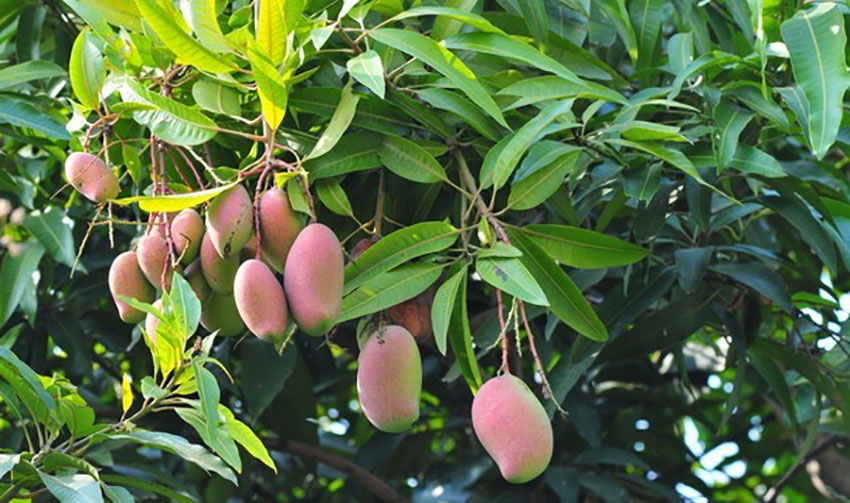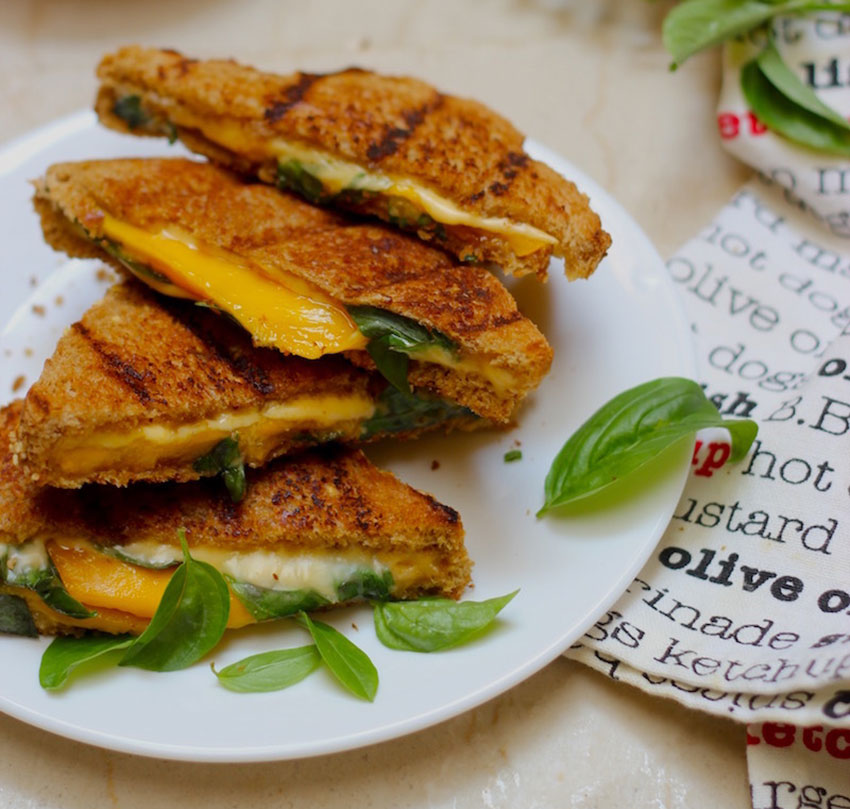Woo-hoo, it’s mango season!
What’s not to love? Especially in Mexico, where they’re plentiful, cheap (or free) and delicious. Plus it’s kind of fun to gloat to friends and family north of the border about the eight pounds of fresh mangos you just bought for 50 pesos.
And they’re healthy, too: mangos are low in calories, high in fiber and antioxidants, and have generous amounts of vitamins A and C.
Do experiment with as many different varieties as you come upon. Each is unique in terms of texture, sweetness, general flavor and juiciness, and different parts of Mexico grow different types. Around Acapulco, you find a strain of the original mangos that came to Mexico from India via Spanish galleons in the 1700s.
In Veracruz, the most widely grown is the Manila, which arrived through England in the 1800s (again, by way of India) and remains one of the most popular varieties today.

Here on the west coast, one of my favorites is the Kent mango: highly perfumed and very sweet, it’s rounded, partially red and quite pretty. The flesh is juicy with none of the characteristic stringiness of some other types.
Also common are Ataulfos, which are a bit tart and have a flat shape with a “beak” at one end. These have a more fibrous texture that makes them good for dehydrating as well as eating.
I once went on a mango-picking excursion to a huge abandoned orchard north of Mazatlán that had hundreds of trees and many different varieties. There I discovered banana mangos – so-called because yes, they’re shaped like bananas! – which I’ve never seen anywhere else. They were delicious, but admittedly a little strange.
Every country claims to grow the sweetest and best mango in the world, but India grows the most. It produces more than half the world’s mango crop, followed by China and then Mexico. The U.S.A. is the biggest importer (no surprise there).
Wise cooks know that mango season is short; it’s best to freeze chunks or purée for later use. Simply peel and pit the mangos, cut into chunks and freeze overnight on a cookie sheet. Then put in an airtight container or freezer bag. Purée can be frozen in containers or ice cube trays, then popped out and kept in freezer bags.
Meanwhile, use the abundance of fresh mangos to make salsas, smoothies, syrups, margaritas, muffins, cobblers and pies … the list is endless. Enjoy!

Mango & Grilled Cheese Sandwiches
Using sweet mango instead of tomato changes this classic sandwich into a tropical treat. Use an aged, softer cheese and grill the mango slices first if you like.
- Ciabatta or soft sourdough bread
- 1 ripe mango
- Gruyere or Gouda cheese
- ¼ cup fresh basil leaves
- 2 Tbsp. butter
- Optional: hot sauce or salsa
Peel, pit and slice mango into thin slices. Assemble sandwich by layering cheese and mango slices between slices of bread; adding salsa if desired. Melt butter in skillet over medium heat; place sandwich in pan and cook, pressing down or laying a heavy plate or bowl on top to compress the sandwich. Cook for 2-3 minutes, till brown; lift sandwich with spatula, add more butter, and when melted, cook the other side the same way.
Mango Icebox Cake
A traditional Filipino cake that works perfectly for the Mexican palate!
- 2 cups heavy cream
- One 14-oz. can sweetened condensed milk
- ½ tsp. vanilla extract
- 1½ cups graham cracker crumbs (“Maria” cookies work great!)
- 4-5 ripe mangos, diced
Combine the cream, sweetened condensed milk and vanilla in a large bowl. Beat with a hand mixer until double in volume, about 4 minutes. In an 8-inch square baking dish, layer cream mixture, cookie crumbs and mango to make 3-4 layers, ending with mango. Chill at least 8 hours or overnight before serving.
Spicy Mango Steak Sauce
This works equally well with grilled chicken or even a veggie-rice bowl.
- 2 Tbsp. canola or vegetable oil
- 1 small red onion, chopped
- 2 garlic cloves, chopped
- 2 very ripe mangos, peeled, pitted and chopped
- ½ cup mango nectar
- 2 Tbsp. ancho chile powder
- ¼ cup prepared horseradish
- 2 Tbsp. honey
- 2 Tbsp. Dijon mustard
- 2 Tbsp. maple syrup
- 2 tsp. Worcestershire sauce
- Salt and freshly ground black pepper
Heat oil over medium-high heat. Add onion and cook until soft, about 5 minutes. Add garlic and cook for 30 seconds. Add mangos, mango nectar, ancho powder and cook, stirring occasionally, until mangos are very soft and mixture has thickened, about 15 minutes. Transfer to food processor or blender. Add horseradish, honey, mustard, maple syrup and Worcestershire; season with salt and pepper, blend until smooth. Scrape sauce into bowl and let cool to room temperature. – Bobby Flay
Mango Butter
Be sure to use the best quality honey you can find, preferably from a local producer. Commercial honey is often diluted with corn syrup and other sweeteners.
- ½ cup honey
- 1 cup unsalted butter, at room temperature
- ½ cup finely chopped ripe mango
In a small bowl, beat honey, butter and mango until evenly mixed, by hand or with a mixer, being careful not to overmix. Transfer to a ramekin, smooth off the top, and serve with warm breakfast breads or toasted sourdough. If you like, spread the butter on a long sheet of plastic wrap and roll up into a cylinder. Refrigerate or freeze and cut off disks of the butter as needed.
Mango with Ginger-Mint Syrup
- 1 cup water
- ½ cup sugar
- 1 (2-inch) piece fresh ginger, thinly sliced
- ¼ cup packed fresh mint leaves
- 2 ripe mangos, peeled, pitted and thinly sliced
- Vanilla ice cream, yogurt or Greek yogurt
Bring water and sugar to a boil in a saucepan and cook until sugar is melted, stirring occasionally. Add ginger and cook for 1 minute. Remove from heat, stir in the mint and steep for 5 minutes. Place mango pieces in a bowl and strain syrup mixture over them’ cover and chill in refrigerator for 30 minutes. Serve over vanilla ice cream or yogurt. – Bobby Flay
Janet Blaser of Mazatlán, Sinaloa, has been a writer, editor and storyteller her entire life and feels fortunate to write about great food, amazing places, fascinating people and unique events. Her work has appeared in numerous travel and expat publications as well as newspapers and magazines. Her first book, Why We Left: An Anthology of American Women Expats, is available on Amazon. Contact Janet or read her blog at whyweleftamerica.com.
